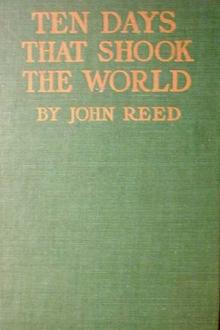Canada, Sir John George Bourinot [best time to read books .TXT] 📗

- Author: Sir John George Bourinot
Book online «Canada, Sir John George Bourinot [best time to read books .TXT] 📗». Author Sir John George Bourinot
The relations of Canada with the United States have been increasingly close and cordial as years have gone on. Many old standing causes of friction have been removed; and in other cases, such as the fisheries dispute, and the extremely high duties levied on Canadian goods in the Dingley Tariff, there has been no recent aggravation of the irritation. In 1894 an end was made to the dispute over the right of America to exclude other nations from taking the seals of the Aleutian Islands outside the three-mile limit. Canadian vessels had been seized and confiscated by America, and a state of high tension existed, which was relieved by a reference of the dispute to arbitration. This time the award was in favour of Canada. The exclusive right of pelagic sealing was denied to the United States, and damages amounting to $464,000 were awarded to the Canadian fishermen.
The year 1896 is memorable, not only for the general election which brought Sir Wilfrid Laurier {430} into power, and for the beginning of an uplift in trade which lasted until October, 1907, but also for the discovery of gold in the Yukon and in Alaska. The great rush of adventurers induced by these discoveries continued for the next two years, and Dawson city grew up with mushroom haste as the metropolis of this Arctic region. Gold discoveries in both Canadian and American territory brought to a crisis the long-pending dispute over the international boundary in the far North-west. In 1898 a joint High Commission was created, whose duties were to settle a number of questions which had long caused friction between Canada and the United States. The sessions of this Commission extended over eight months without accomplishing anything. No formal ending was made to the work of the Commission, but it never re-assembled after its adjournment in February, 1899.
It was not until 1903 that an agreement was reached between Great Britain and the United States concerning the Alaskan boundary line. In that year a treaty was concluded by which this long-disputed question was relegated to a Commission of six jurists, three British and three American, who by a majority vote were empowered to determine the boundary line. The British members of the Commission were Lord Alverstone, Chief Justice of England, who was made president, with a casting vote in case of a tie, and two Canadians, Sir Louis Jette and Mr. A. B. Aylesworth, both eminent jurists. The American members were Mr. Henry C. Lodge, Mr. Elihu Root, and Mr. George Turner. The {431} report of the Commission, which was transmitted to the Governments of the United States and Great Britain in October, 1903, was somewhat disappointing to Canadians, as, on the whole, the Americans gained their contentions. Canada was shut out from water communication with the Yukon as far south as Portland Channel. The treaty in which this report was incorporated, and which was finally ratified in 1905, was, however, beneficial in removing a long-standing cause of irritation between the two nations, and Canada's need for a port was met in some degree by bonding concessions at the American ports on the Alaskan coast. An International Commission to mark out the boundary line was at work in Alaska in the summer of 1908.
Serious disturbance to a number of Canadian interests, especially those of the lumbermen, was caused by the passing of the Dingley Act, with its high duties on all Canadian exports except some raw materials. To the attack on Canadian lumber Ontario replied by prohibiting the export of saw logs cut on Crown timber limits, a step which led to the transfer of a considerable number of saw mills to the Canadian side of the border line. Another cause of complaint against the United States has been the strict and harsh enforcement of the contract labour laws on the American side of the boundary line.
It is the not unfounded boast of Canadians that as the nineteenth century was the century of growth and development of the United States, so the twentieth is to be the century of Canada; and the outstanding feature of Canadian development in {432} the last decade of the nineteenth century and the early years of the twentieth is the awakening of her national consciousness. In all her relations with Great Britain this sense of nationality has been continuously manifest. In the Colonial Conferences which have been held at intervals in London since the first Jubilee of Queen Victoria in 1887, Canada has been acknowledgedly first among the self-governing colonies. In 1897, partly as a result of the enthusiasm created by enactment of the preference for Great Britain by the Dominion Parliament, Sir Wilfrid Laurier was the foremost figure among the colonial statesmen who were in London for the Diamond Jubilee. Another evidence of loyalty and of the close connection between Canada and Great Britain in the Jubilee year was the institution of two cent postage between Great Britain and Canada. Canada's domestic rate of letter postage from 1868 had been three cents, a rate which was extended to the United States by a postal convention, by which the domestic rate of Canada was made applicable to all letters and papers entering the United States, and that of the United States to all mail matter for Canada. This rate of three cents remained in force until January, 1899, when the two cent rate was made general for Canada, the United States, and Great Britain. In 1907, the rate for newspapers and periodicals between Great Britain and Canada was again lowered, and in August, 1908, a one cent rate for letters within the area of a town or city was adopted by the Canadian Post Office.
When the South African War broke out in 1899, {433} Canada was the first of the colonies to come to the help of the mother country; and the Canadian contingents, the first of which left Canada for South Africa in October, 1899, rendered excellent service in the Boer War, especially in such work as scouting and the guerilla fighting in which the Boers were so adept.
The treaty-making power is still withheld from the Dominion; but since the Alaskan boundary treaty Great Britain has given more and more attention to the demands and needs of Canada when treaties have been in negotiation, and in 1907 Sir Wilfrid Laurier, Mr. W. S. Fielding, Minister of Finance, and the Hon. Mr. L. P. Brodeur went to Paris to negotiate directly a commercial treaty with the French Government. During the years from 1904 to 1907 the British Government gradually withdrew all the troops and warships which had been stationed in the Dominion. Canada assumed control of the fortifications of Halifax and Esquimalt in July, 1905, and the replacing of British by Canadian soldiers was complete by February, 1906. The naval dockyard at Halifax was handed over to the Canadian Government authorities in January, 1907; and from end to end of the Dominion Canada is now in complete and undivided control of her own territory.
[1] The boundaries of the new provinces were finally settled by an Act of Parliament passed in 1908--an Act which also greatly enlarged the boundaries of Manitoba, Ontario, and Quebec.
XXIX.
FRENCH CANADA.
As this story commenced with a survey from the heights of Quebec of the Dominion of Canada from ocean to ocean, so now may it fitly close with a review of the condition of the French Canadian people who still inhabit the valley of the St. Lawrence, and whose history is contemporaneous with that of the ancient city whose picturesque walls and buildings recall the designs of French ambition on this continent.
Though the fortifications of Louisbourg and Ticonderoga, of Niagara, Frontenac, and other historic places of the French regime in America have been razed to the ground, and the French flag is never seen in the valley of the St. Lawrence, except on some holiday in company with other national colours, nevertheless on the continent where she once thought to reign supreme, France has been able to leave a permanent impress. But this impress is not in the valley of the Mississippi. It is true that a number of French still live on the banks of the great river, that many a little village where a French {436} patois is spoken lies hidden in the sequestered bayous of the South, and that no part of the old city of New Orleans possesses so much interest for the European stranger as the French or Creole quarter, with its quaint balconied houses and luxuriant gardens; but despite all this, it is generally admitted that the time is not far distant when the French language will disappear from Louisiana, and few evidences will be found of the days of the French occupancy of that beautiful State of the Union. On the banks of the St. Lawrence,





Comments (0)